第9章 PREFACE(9)
Where schools exist the instruction consists mainly in teaching the children to repeat, in a tongue which they do not understand, certain passages from the Koran and some set prayers.
As to law, Sir Stamford Raffles observed in a formal despatch, "Nothing has tended more decidedly to the deterioration of the Malay character than the want of a well-defined and generally acknowledged system of law." There are numerous legal compilations, however, and nearly every State has a code of its own to a certain extent; there are maritime and land codes, besides "customs" bad and good, which override the written law; while in Perak, Selangor, and Sungei Ujong an ill understood adaptation of some portions of British law further complicates matters.
"The glorious uncertainty" of law is nowhere more fully exemplified than on this Peninsula. It is from the Golden Island, the parent Empire of Menangkabau, that the Malays profess to derive both their criminal and civil law, their tribal system, their rules for the division of land by boundary marks, and the manner of government as adapted for sovereigns and their ministers. The existence of the various legal compilations has led to much controversy and even bloodshed between zealots for the letter of the Koran on one side, and the advocates of ancient custom on the other. Among the reasons which have led to the migration of Malays from the native states into the Straits Settlements, not the least powerful is the equality of rights before English law, and the security given by it to property of every kind. In the Malay country itself, occupied by Malays and the Chinese associated with them, there are four Malays to the square mile, whilst under the British flag some one hundred and twenty-five Malays to the square mile have taken refuge and sought protection for their industry under our law!
Cock-fighting, which has attained to the dignity of a literature of its own, is the popular Malay sport; but the grand sport is a tiger and buffalo fight, reserved for rare occasions, however, on account of its expense. Cock-fighting is a source of gigantic gambling and desperate feuds. The birds, which fight in full feather and with sharpened steel spurs, are very courageous, and die rather than give in. Wrestling among young men and tossing the wicker ball, are favorite amusements.
There are professional dancing girls, but dancing as a social amusement is naturally regarded with disfavor. Children have various games peculiar to themselves, which are abandoned as childish things at a given age. Riddles and enigmas occupy a good deal of time among the higher classes. Chess also occupies much time, but it is much to be feared that the vice of gambling stimulated by the Chinese, who have introduced both cards and dice, is taking the place of more innocent pastimes.
The Malays, like other Mohammedans, practice polygamy. They are very jealous, and their women are veiled and to a certain extent secluded; but they are affectionate, and among the lower classes there is a good deal of domesticity. Their houses are described in the following letters. The food of the poorer classes consists mainly of rice and salt-fish, curries of both, maize, sugar-cane, bananas, and jungle fruits, cocoa-nut milk being used in the preparation of food as well as for a beverage. As luxuries they chew betelnut and smoke tobacco, and although intoxicants are forbidden, they tap the toddy palm and drink of its easily fermented juice. Where metal finds its way into domestic utensils it is usually in the form of tin water-bottles and ewers.
Every native possesses a sweeping broom, sleeping mats, coarse or fine, and bamboo or grass baskets. Most families use an iron pan for cooking, with a half cocoa-nut shell for a ladle. A large nut shell filled with palm-oil, and containing a pith wick, is the ordinary Malay lamp. Among the poor, fresh leaves serve as plates and dishes, but the chiefs possess china.
The Malay weapons consist of the celebrated kris, with its flame-shaped wavy blade; the sword, regarded, however, more as an ornament; the parang, which is both knife and weapon; the steel-headed spear, which cost us so many lives in the Perak war; matchlocks, blunderbusses, and lelahs, long heavy brass guns used for the defense of the stockades behind which the Malays usually fight. They make their own gunpowder, and use cartridges made of cane.